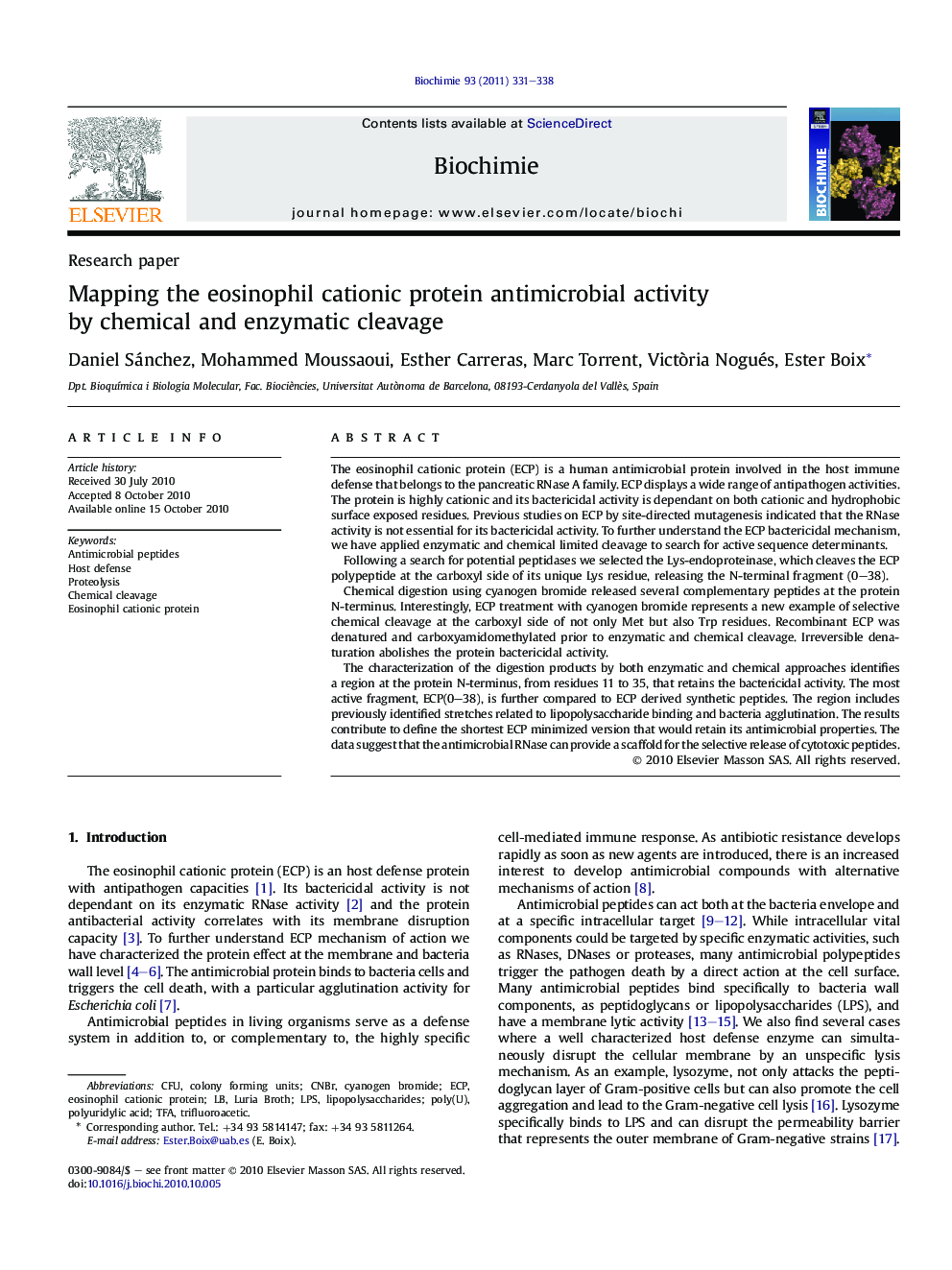| کد مقاله | کد نشریه | سال انتشار | مقاله انگلیسی | نسخه تمام متن |
|---|---|---|---|---|
| 1952516 | 1057212 | 2011 | 8 صفحه PDF | دانلود رایگان |

The eosinophil cationic protein (ECP) is a human antimicrobial protein involved in the host immune defense that belongs to the pancreatic RNase A family. ECP displays a wide range of antipathogen activities. The protein is highly cationic and its bactericidal activity is dependant on both cationic and hydrophobic surface exposed residues. Previous studies on ECP by site-directed mutagenesis indicated that the RNase activity is not essential for its bactericidal activity. To further understand the ECP bactericidal mechanism, we have applied enzymatic and chemical limited cleavage to search for active sequence determinants.Following a search for potential peptidases we selected the Lys-endoproteinase, which cleaves the ECP polypeptide at the carboxyl side of its unique Lys residue, releasing the N-terminal fragment (0–38).Chemical digestion using cyanogen bromide released several complementary peptides at the protein N-terminus. Interestingly, ECP treatment with cyanogen bromide represents a new example of selective chemical cleavage at the carboxyl side of not only Met but also Trp residues. Recombinant ECP was denatured and carboxyamidomethylated prior to enzymatic and chemical cleavage. Irreversible denaturation abolishes the protein bactericidal activity.The characterization of the digestion products by both enzymatic and chemical approaches identifies a region at the protein N-terminus, from residues 11 to 35, that retains the bactericidal activity. The most active fragment, ECP(0–38), is further compared to ECP derived synthetic peptides. The region includes previously identified stretches related to lipopolysaccharide binding and bacteria agglutination. The results contribute to define the shortest ECP minimized version that would retain its antimicrobial properties. The data suggest that the antimicrobial RNase can provide a scaffold for the selective release of cytotoxic peptides.
Research highlights
► The eosinophil cationic protein (ECP) is a human antimicrobial protein involved in the host immune defense.
► ECP digestion products released both by CNBr chemical cleavage and Lys-endoproteinase enzymatic proteolysis were screened for bactericidal activity on Escherichia coli and Staphylococcus aureus cell cultures.
► ECP digestion products were compared with ECP derived synthetic peptides.
► Sequence determinants for antimicrobial activity were identified and the data confirms the main role of ECP N-terminus.
Journal: Biochimie - Volume 93, Issue 2, February 2011, Pages 331–338